Travel Guide, Ha Giang Loop
Ha Giang Loop Best Time Of Year: A Full Travel Guide
Ha Giang, a border province in the northeastern mountainous region of Vietnam, is located about 300 km from Hanoi city and has become a popular destination for both domestic and international tourists. Its most famous attraction, the Ha Giang Loop, is a breathtaking circuit through mountains, valleys, and indigenous villages, offering some of the most spectacular landscapes in Southeast Asia. Deciding the best time of year to embark on this journey is crucial to fully enjoy what the Ha Giang Loop has to offer.
Which month should I do Ha Giang Loop?
The ideal time to complete the Ha Giang Loop on a road trip through Vietnam’s Ha Giang province depends on the season you choose to travel. The scenery in this northern province is among the most breathtaking in all of Vietnam. This is a guide to help you decide when the Ha Giang Loop is best to do.
Spring (February to April) – A Time of Festivity and Blossoms
The dry season, which brings plenty of sunshine and less precipitation to Northern Vietnam. This results in amazing scenery along the mountains. This, in my opinion, is the ideal time to complete the Ha Giang Loop.
Additionally, the weather guarantees a safer trip. Specifically, March is a delightful month with clear skies and a comfortable temperature of about 19°C, which makes it the perfect time for trekking.
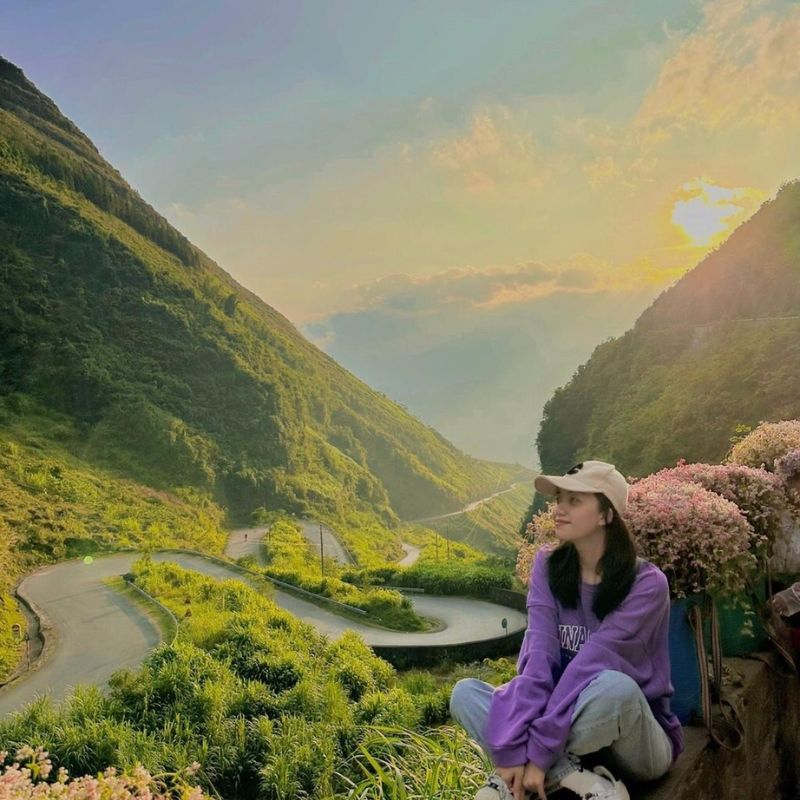
On the other hand, February can be fairly cold, with average highs of 17°C and 18°C, respectively. This dip in temperature can be particularly chilly for motorcycle riders, so bring warm clothing to stay toasty and cozy.
Spring in Ha Giang is a magical time. The weather starts to warm up, and the region bursts into life with its famous Peach and Plum blossoms. This is also a culturally rich period, with many traditional festivals taking place, offering a glimpse into the life and customs of local ethnic communities.
Pros:
- Ideal weather conditions: cool and dry.
- Vibrant cultural festivals.
- Stunning blossoms transforming the landscape.
Cons:
- Can be crowded due to local tourism during festivals.
Summer (May to August) – Greenery and Waterfalls
Summer in Ha Giang is a period of transformation, where the landscape shifts into a vibrant canvas of lush greenery. This season offers a unique experience, distinct from the golden hues of autumn or the blossomy vibrance of spring.
During summer, Ha Giang experiences its monsoon season. This results in a significant increase in rainfall, leading to a cooler climate compared to the scorching heat found in other parts of Vietnam. Temperatures range from 25°C to 32°C, creating a relatively comfortable environment for exploring. The rice paddies, a dominant feature of the landscape, are in their growing stage, presenting a mesmerizing sea of green steps. The terraced fields in Hoang Su Phi are particularly breathtaking during this season.
Pros:
- Vibrant green terraced rice fields.
- Spectacular waterfalls due to increased rainfall.
Cons:
- The rainy season can make roads slippery and travel more challenging.
- Increased humidity and occasional heavy showers.
Autumn (September to November) – The Golden Season
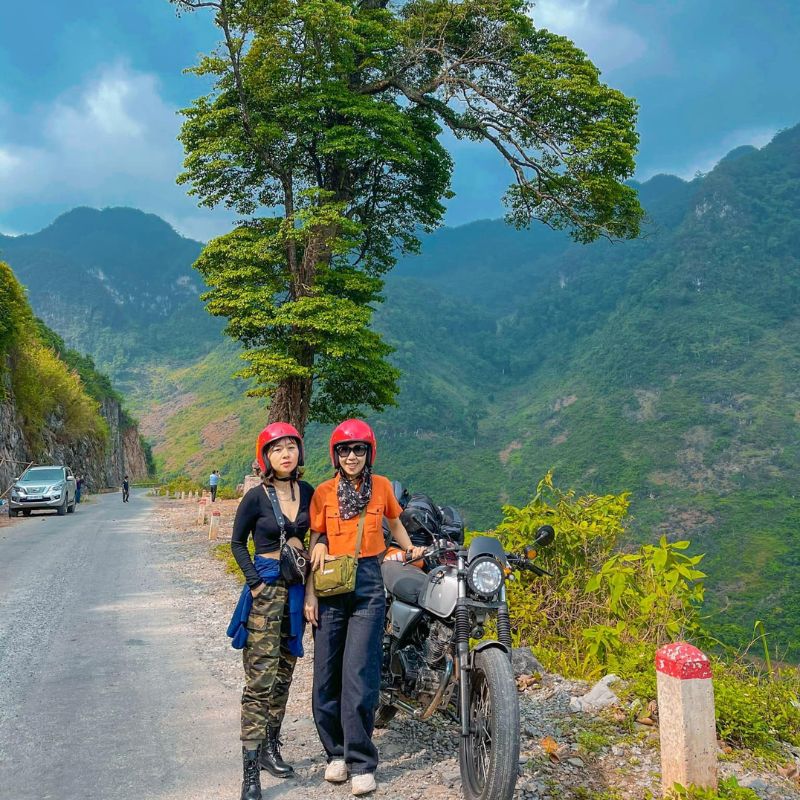
Autumn in Ha Giang is often hailed as the most picturesque time of the year. This season brings a unique charm to the Ha Giang Loop, making it an ideal time for visitors to explore and experience the beauty of this region. Moderate temperatures range from 18°C to 25°C, offering a comfortable climate for outdoor activities. Mornings can be a bit foggy, especially in higher altitudes, which may briefly obscure views. As it’s a popular time to visit, some areas may be more crowded, particularly during weekends or local holidays.
Pros:
- Breathtaking golden rice terraces.
- Ideal trekking and motorbiking conditions.
- Cooler, comfortable climate.
Cons:
- Popular among tourists, so expect some crowded spots.
Winter (December to January) – The Season of Contrasts
Winter in Ha Giang is marked by a noticeable drop in temperature, which can bring a new perspective to the region’s rugged terrain. Crisp and clear weather, with temperatures ranging from 10°C to 16°C, provides a refreshing change from the usual tropical climate. The cooler weather brings out a different aspect of Ha Giang’s natural beauty, with frost sometimes seen in higher altitudes.
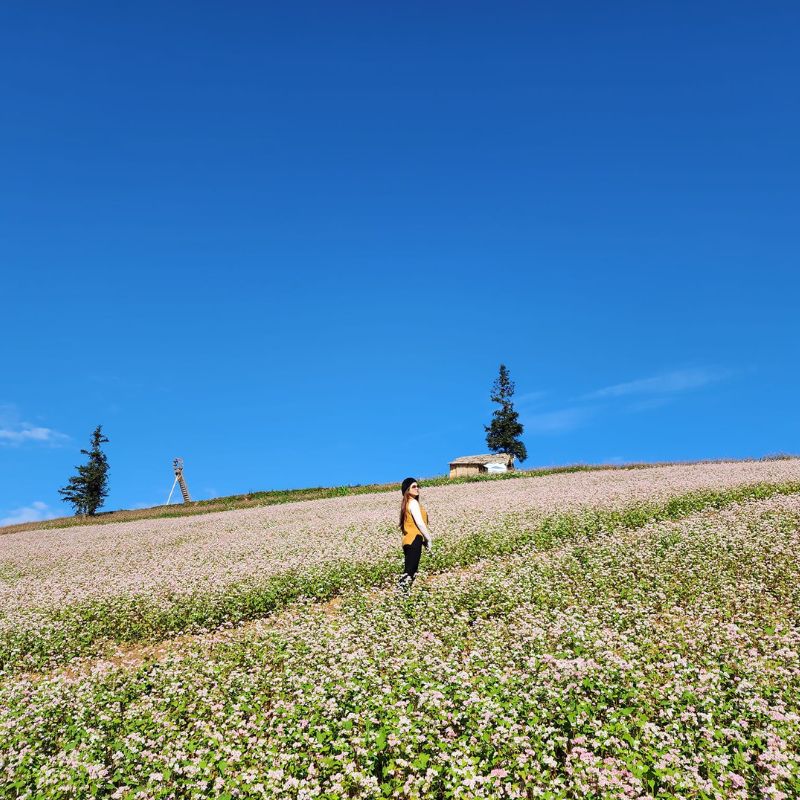
One of the highlights of winter in Ha Giang is the blooming of buckwheat flowers. These flowers blanket the hills and valleys in shades of pink and white, creating a stunningly picturesque landscape. In late winter, fields of mustard flowers start to bloom, adorning the landscape with bright yellow hues, a sight that is both beautiful and unique to the region.
Pros:
- Unique beauty of Buckwheat flowers.
- Fewer tourists, more tranquil experience.
Cons:
- Cold weather, especially in the higher regions.
- Some accommodations might not have adequate heating.
Tips when Traveling to Ha Giang Loop During the Rainy Season
Traveling to Ha Giang Loop during the rainy season can be a unique and rewarding experience, but it also requires special preparation and consideration. Here are some essential tips to help you navigate the challenges and make the most of your journey during this season:
- Check Weather Forecasts: Keep an eye on the weather forecast before and during your trip. This will help you plan your daily routes and activities accordingly.
- Choose the Right Gear: Pack waterproof clothing, including a good-quality rain jacket and pants. Sturdy waterproof hiking boots are essential for slippery and muddy trails.
- Waterproof Your Belongings: Use waterproof bags or covers for your backpack, electronics, and important documents to protect them from the rain.
- Start Early: Rain is often more predictable in the afternoon, so try to start your journeys early in the day to avoid getting caught in heavy rain.
- Stay Informed: Check with locals or guesthouse owners for updates on road conditions. They can provide valuable information about the current state of the trails and any potential hazards.
- Flexible Itinerary: Be flexible with your itinerary. Rain can alter your plans, so be open to adjusting your schedule based on the weather conditions.
The Ha Giang Loop is an experience of a lifetime, and choosing the right time to visit can greatly enhance this adventure. Whether you’re looking for cultural richness, natural beauty, or serene landscapes, each season in Ha Giang has something unique to offer. Plan your trip according to your preferences and get ready to be awed by the beauty of Ha Giang!
FAQs about Ha Giang Loop Best Time Of Year
Can I travel the Ha Giang Loop in winter?
Yes, you can absolutely travel the Ha Giang Loop in winter. While the temperatures in Ha Giang during December to January can be quite cold, especially in higher altitudes, the winter season offers a unique and serene beauty. The landscapes are stark yet stunning, highlighted by the blooming of pink and white buckwheat flowers. The winter months also tend to be less crowded, offering a more tranquil experience. Additionally, the roads can be drier in winter, making it a good season for motorbiking or driving, but always exercise caution, as mornings can be foggy. Winter in Ha Giang is a great time for those who appreciate quieter travels and the stark beauty of a landscape in repose.
Are there any cultural events or festivals in Ha Giang worth planning my trip around?
Absolutely, Ha Giang is home to several cultural events and festivals that are worth planning your trip around. One of the most notable is the Lunar New Year (Tet) celebration, which usually takes place between late January and early February. It’s a time when local customs and traditions are at their most vibrant. Another significant event is the Khau Vai Love Market, held annually in April. It’s not just a market but a unique cultural gathering that symbolizes love and romance in the local traditions. Additionally, various spring festivals occur between February and April, showcasing ethnic dances, traditional games, and local customs.
Is Ha Giang Loop suitable for inexperienced motorbike riders?
The Ha Giang Loop, with its winding mountain roads and varying conditions, presents a challenging route that may not be suitable for inexperienced motorbike riders. The terrain includes steep ascents, sharp turns, and occasionally rough patches, requiring a good level of riding skill and confidence.
For beginners or less experienced riders, navigating these roads can be quite daunting. It’s important to assess your riding skills realistically before deciding to undertake the loop on a motorbike. Alternatively, inexperienced riders might consider joining a guided motorbike tour where experienced guides lead the way, or opting for a car tour to safely experience the stunning landscapes and culture of Ha Giang. Safety should always be a priority, and there’s no shame in choosing a travel method that ensures a comfortable and enjoyable experience.
Can I travel the Ha Giang Loop solo?
Traveling the Ha Giang Loop solo is definitely feasible and can be a profoundly rewarding experience for independent adventurers. Many solo travelers embark on this journey, drawn by the allure of its stunning landscapes and rich cultural encounters. While solo travel on the Ha Giang Loop offers the freedom to explore at your own pace, it also requires a higher level of self-reliance and responsibility. If you’re confident in your riding skills and prepared for the adventure, the Ha Giang Loop can be an unforgettable solo journey.
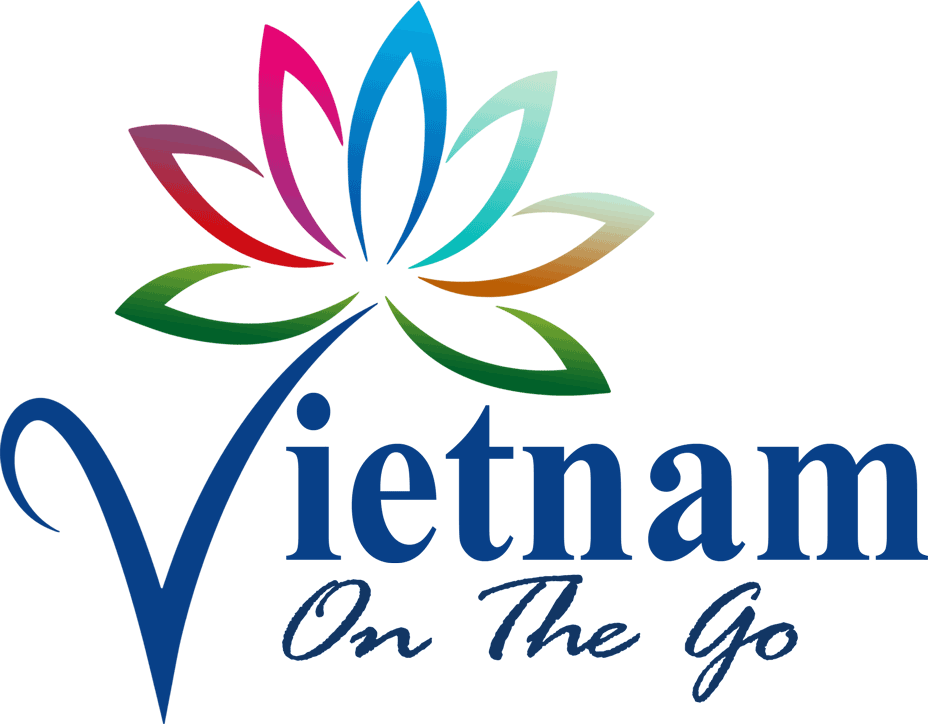
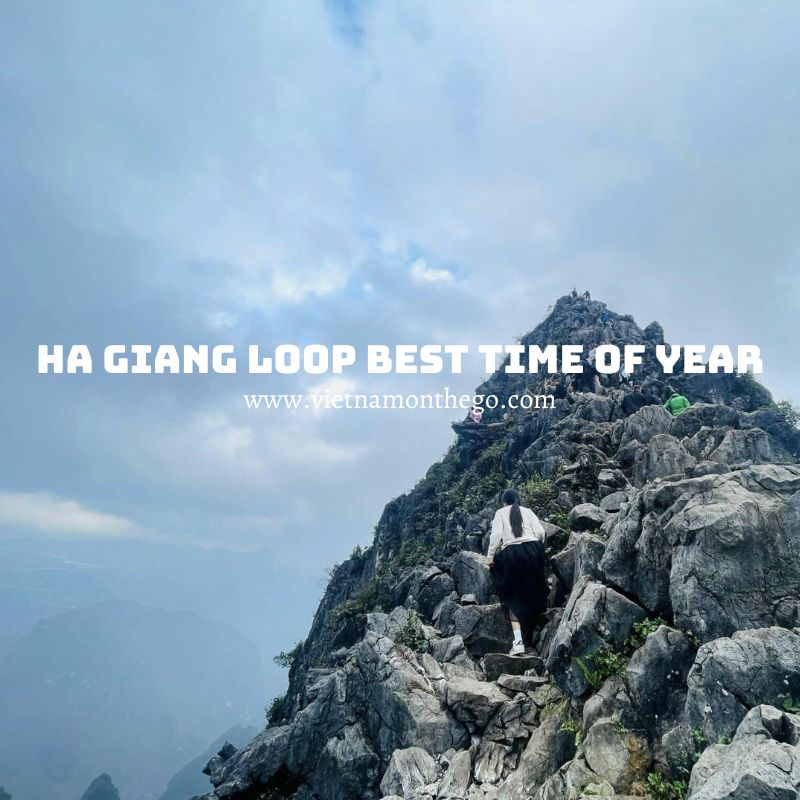
![[3 DAYS 4 NIGHTS] Ha Giang Loop Motorbike Tour from Hanoi](https://vietnamonthego.com/wp-content/uploads/2024/03/ha-giang-loop-tour-6-300x300.jpg)
![[4 DAYS 5 NIGHTS] Ha Giang Loop Motorbike Tour from Hanoi](https://vietnamonthego.com/wp-content/uploads/2024/03/ha-giang-loop-tour-300x300.jpg)